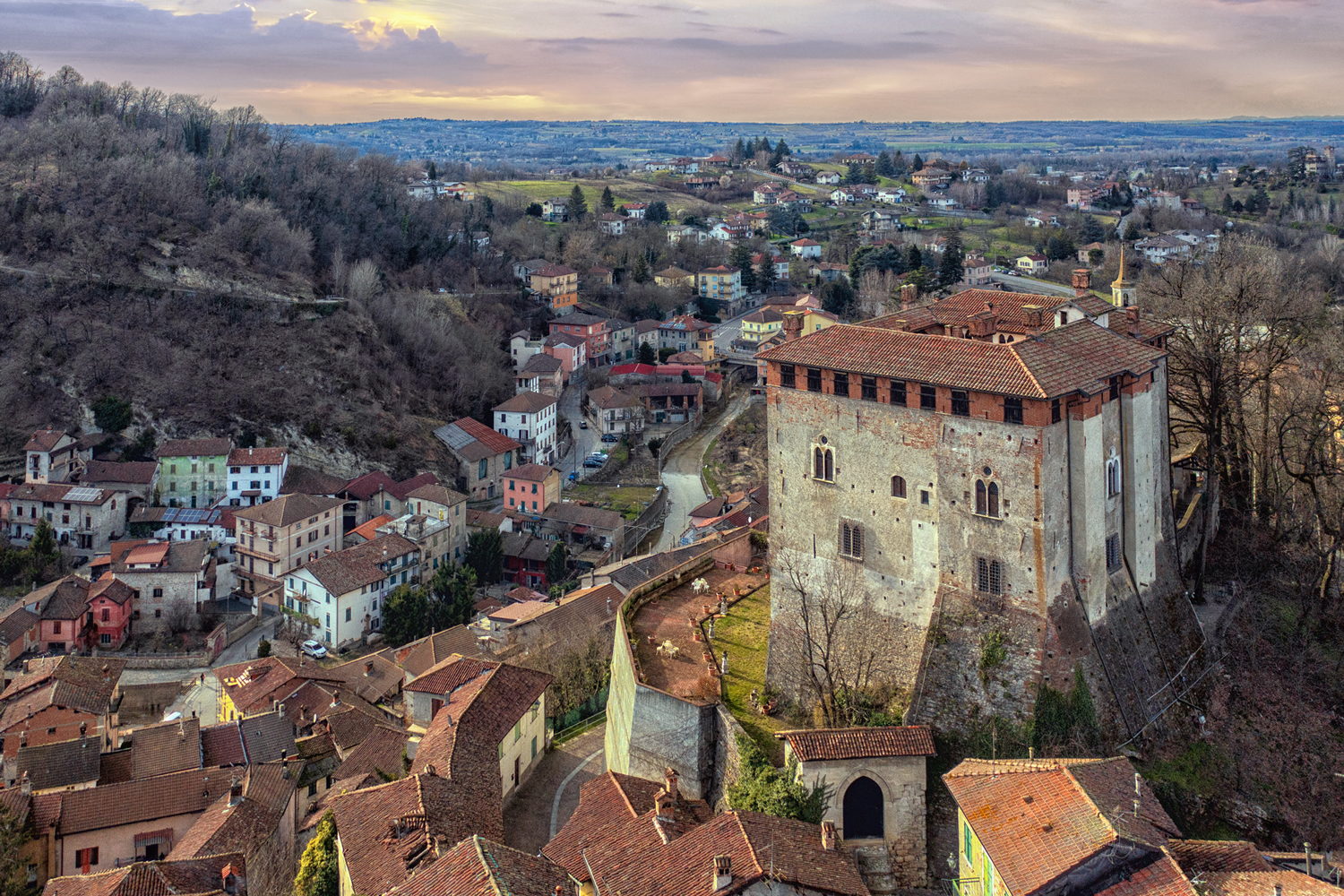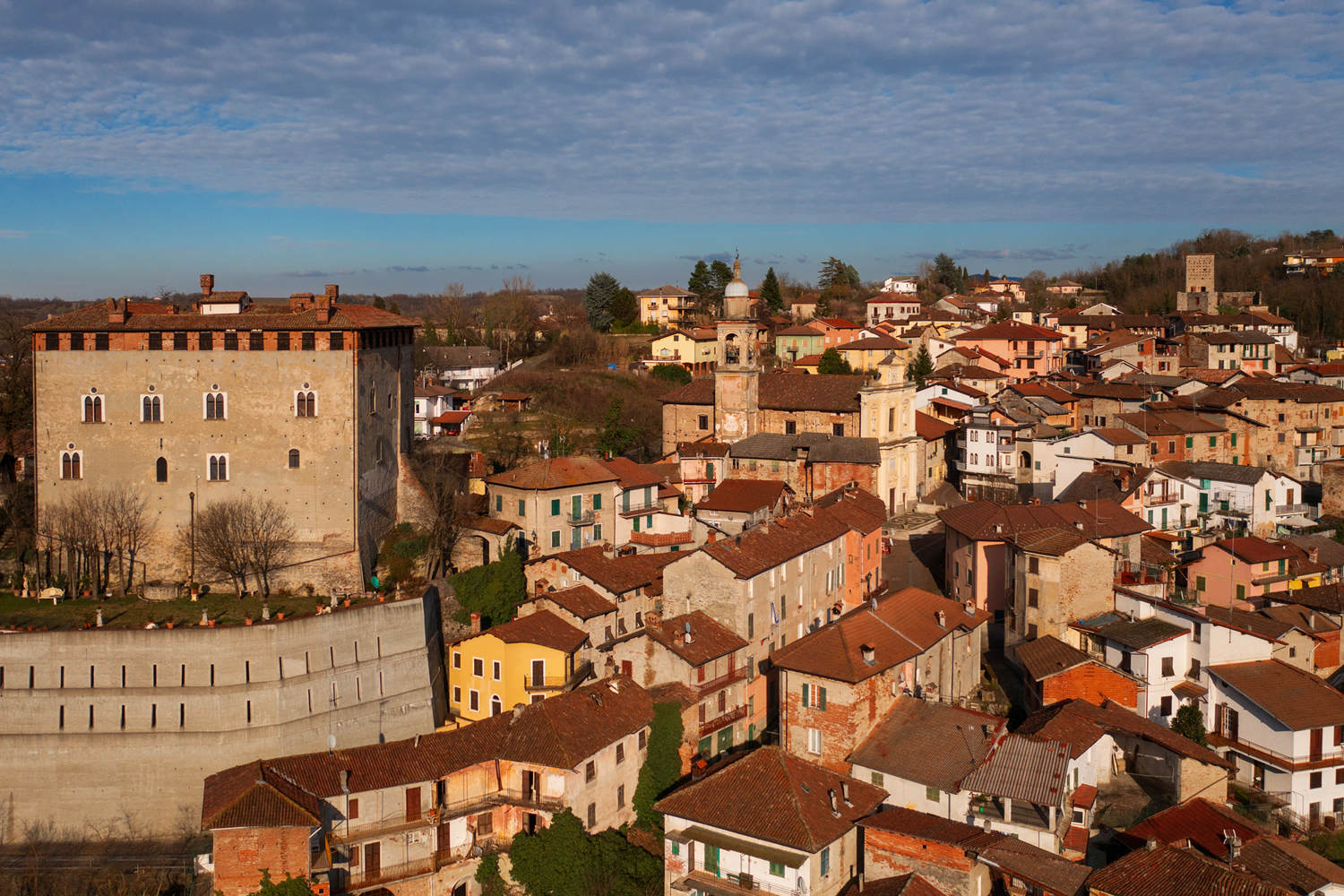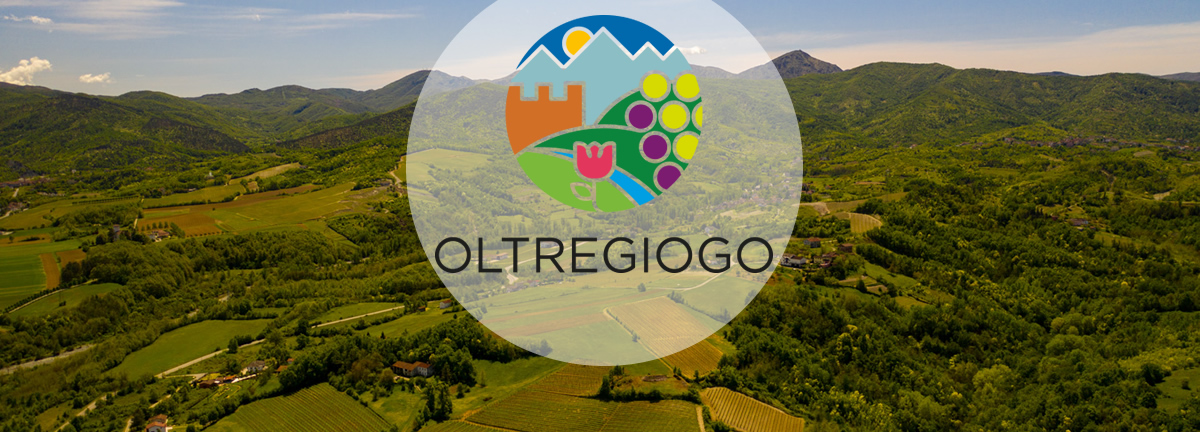We know that Castelletto D’Orba, after the mid-10th century, was part of the Marca Obertenga, whose border with the Aleramica was represented by the Orba and Stura streams. The lords of Castelletto were the marquises of Parodi-Massa, of Obertengha ancestry. The overseas expedition of the so-called First Crusade dates back to this period, in which the Marquis of Parodi participated, with the archers of Castelletto following him.
In 1201, Genoa signed a treaty with some lords of Castelletto against the revenge attempts of the marquises of Parodi and Gavi.
In 1220, in relation to the castle, the construction of the tower and the dungeon is attested: this is probably the first nucleus of the building still in existence. In 1522, Antoniotto Adorno, doge of Genoa and feudal lord of Castelletto, had the site rearranged with the reconstruction of the “Porta Januensis”, or ‘Genoese gate’, mentioned in the Statutes of 1350-51, which opened onto the ridge road to Montaldeo. From the Statutes, we understand that the village was closed by a wall; then there was a more internal refuge, on the side of the castle, which included the current Via Torniella, of which the Porta Caffarella survives.
The town, called Castelletto Val D’Orba in documents, will alternate this name with that of Castelletto Adorno. It was precisely under the leadership of the feudal lord Agostino Adorno that, in 1571, the people of Castelletta, led by Marc’Antonio Cortella, participated, with the fiefdoms of Calabria and Valle Orba, in the battle of Lepanto.
After the Napoleonic period, the Castelletto district became part of the Province of Novi, a division of Genoa, and finally, in 1859, it was aggregated to the new Province of Alessandria.

THE CASTLE AND THE VILLAGE OF TORNIELLA
From the very first years of the 15th century, the presence of the Adorno Castle is documented, which was the favourite residence of Antoniotto, four times Doge of Genoa, until his death in 1398. It was restored several times: the last campaign dates back to 1903.
It is an unusual construction compared to other castles: it is a block tending towards a square, absolutely regular, without any tower. The entrance was probably raised above ground level, the courtyard central with respect to the buildings, leaning against the curtains. An external wall surrounded the castle and formed the lower courtyard: this still exists and is well preserved. The internal courtyard is Renaissance with a triple loggia with an external staircase. The windows on the main floor are interesting, with the characteristic bull’s-eye motif above the architrave, also taken up by the windows on the facade.
THE ROMANISH CHURCH OF S. INNOCENCE
It is a monastic church that depended, starting from the 12th century, on the well-known Ligurian monastery of San Fruttuoso di Capodimonte, under the patronage of the Doria family. It is located along the itinerary which, descending from Marcarolo, passing through Castelvero (an ancient settlement which was located in the plain downstream from Castelletto), reached the plain. The building has a typical gabled façade, in which various decorative elements are inserted, almost certainly belonging to a pre-existing high medieval building.

The walls are covered with pictorial cycles executed at different times and by different hands: the oldest frescoes are placed on both walls of the nave. The decoration of the right wall includes a triptych with Saint Anthony, Saint Innocent and Saint Catherine of Alexandria. The three figures are surmounted by cusps decorated with scenes of the Annunciation and the Crucifixion. On the triumphal arch are depicted Saint John the Evangelist, Saint John the Baptist, Saint Innocent, Saint Bernard and Saint Sebastian. Above there are a Crucifixion and an Annunciation with the dominant figure of Christ Pantocrator. The Crucifixion presents the only landscape detail of the entire pictorial cycle of Sant’Innocenzo: the background is occupied by a walled enclosure (the city of Jerusalem).
THE PARISH CHURCH OF SAN LORENZO
It seems to have been founded in 1162 and was immediately subject to the Abbey of San Fruttuoso di Capodimonte until 1770.
The building is raised above street level, a difference in height that can be overcome via a large staircase that fits well with the lively baroque façade. The interior has three naves with a semicircular apse at the end of the central nave and is full of altars in the side naves. In the left nave there is the chapel which has preserved, since 1798, the bodies of the martyrs Theodore and Faustino who, at different times, had arrived in Castelletto from Rome, on the initiative of Antonio Mazzarino from Castelletto.
In the right nave there is the chapel of the Madonna del Rosario, in which there is the eighteenth-century wooden statue of the Virgin and Child, the work of Nicolò Tassara, a Genoese sculptor and valid competitor to Anton Maria Maragliano. At the end of this nave, the baptismal font decorated with grotesquely shaped cherubs, which features a Latin inscription stating that one cannot reach paradise without having undergone baptism.
THE ORATORY OF N.S. OF PURIFICATION
The building dates back to the 15th century. There are very important frescoes that recall those present in the Church of San Giovanni al Piano in Lerma.
THE PRESS MUSEUM AND ANCIENT CELLAR
The Bozzolina village, on the heights of the municipality of Castelletto, houses the ancient, gigantic walnut oil press dating back to 1716.
This press is made up of wooden parts, with the main beam exceeding 7 meters in length, and massive stone components. The complex is located in a museum dedicated to this testimony of the rural world which is exceptional for our area.
A few meters from the museum there is a period cellar, containing exclusively wooden equipment made by a local carpenter; captions are prepared with the name in the local dialect.
Gallery
